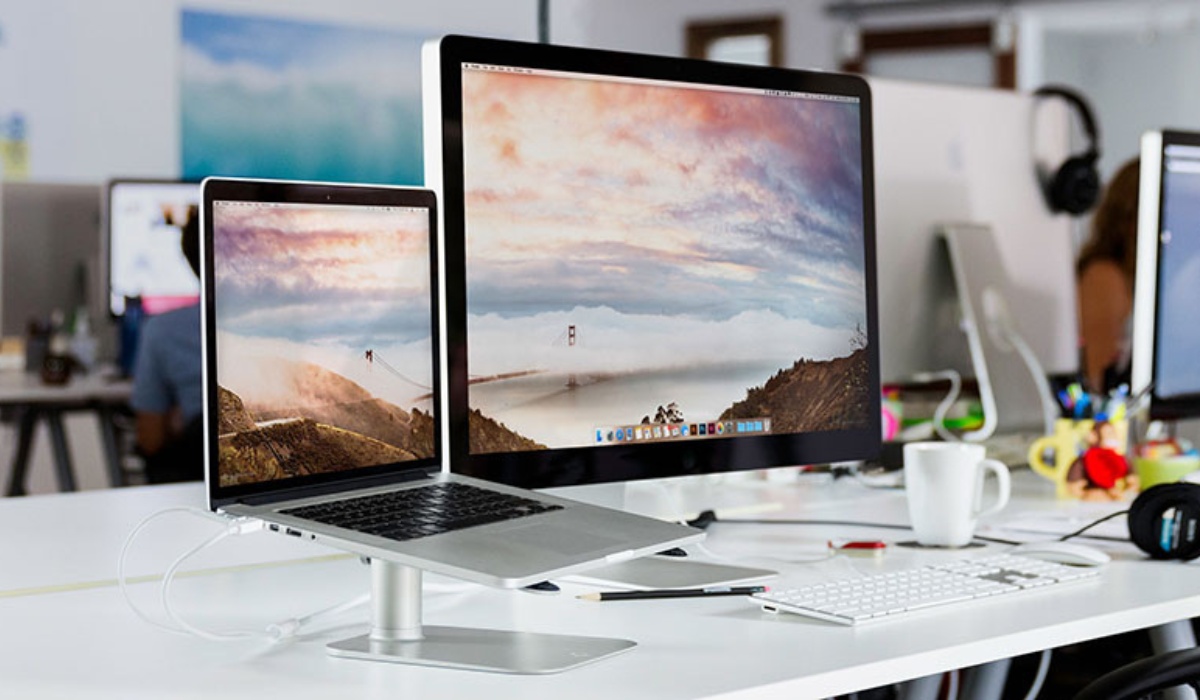Table of Contents
Definition of a PC
PC stands for Personal Computer. It refers to a type of computer designed for individual use, typically for tasks such as word processing, internet browsing, gaming, and general computing. PCs come in various forms, including desktops, laptops, and workstations, and they can run different operating systems like Windows, macOS, or Linux.
The technological advancements have led to the creation of a compact personal computer usable as a word processor and for various computing tasks in the 1980s.
Components of a PC

Central Processing Unit (CPU)
The central processor unit (CPU) is the main part of a personal computer that does the majority of computations and data processing. It’s sometimes called the computer’s “brain”. The central processing unit (CPU) is accountable for carrying out instructions, executing arithmetic and logic operations, and managing the data transfer among various hardware constituents.
Memory (RAM)
A PC uses random access memory (RAM), a form of volatile memory, to temporarily store data while the computer is operating. RAM enhances computer speed by enabling the central processor unit (CPU) to access and manipulate data quickly.
Storage (Hard Drive or SSD)
Providing the computer its long-term memory. When the PC is not powered on, it saves data. Hard disk drives, solid-state drives, or express SSDs for non-volatile memory can be found in PCs.
Motherboard
Requiring the connection of all hardware components, including the CPU, RAM, and storage devices, the motherboard is the primary circuit board of a personal computer. Additionally, the motherboard powers the various parts and makes it easier for them to communicate with one another.
Graphics Processing Unit (GPU)
GPU stands for Graphics Processing Unit. It is a specialized electronic circuit that accelerates the processing of images and videos for rendering on a display. Originally designed for rendering graphics in video games, GPUs have evolved to handle a wide range of parallel processing tasks, making them suitable for various applications beyond graphics.
Computer cases
A computer case, also known as a computer chassis or tower, is an enclosure that houses the components of a computer. Its primary purpose is to protect the internal components from physical damage, provide cooling, and offer a framework for connecting external peripherals. Computer cases come in various shapes and sizes, and they can accommodate different form factors of motherboards.
Monitor
A monitor is an output device that displays visual information generated by a computer or other electronic devices. It is also commonly referred to as a screen or display.
Keyboards
A keyboard is an input device that uses a set of keys or buttons to send data to a computer or other devices. It is one of the primary means by which users input alphanumeric characters, numbers, symbols, and various commands into a computer.
Mice and trackpads
Mice and trackpads are input devices that allow users to interact with computers and other devices by providing a means to control the cursor on a screen, make selections, and perform various actions.
Types of PCs

There are many different types of personal computers, including the following:
Desktop computers
A desktop computer is designed to be used on a desk or table at a fixed location, as opposed to portable computers like laptops or tablets. It typically consists of several components, each serving a specific purpose, and is intended for a wide range of tasks, including productivity, gaming, content creation, and general computing.
Desktop computers offer advantages such as greater customization, expandability, and often more powerful hardware compared to laptops. They are commonly used in offices, homes, and other fixed locations where portability is not a primary concern. Users can choose or assemble components based on their specific needs, making desktop computers versatile for various tasks and applications.
Workstation
A workstation is a high-performance computer system designed for professional or technical applications that require significant computational power and specialized hardware. Workstations are optimized for tasks such as scientific modeling, engineering simulations, 3D rendering, video editing, and other demanding applications that often involve complex calculations and data processing.
Tablets
Tablets are portable computing devices that feature a touchscreen interface and are designed for a variety of tasks such as web browsing, email, entertainment, and productivity. They typically consist of a large, flat display and lack a physical keyboard or mouse, relying on the touchscreen for user input. Tablets are known for their portability and versatility, offering a convenient form factor for users on the go.
Laptop computers
A laptop, also known as a notebook, is a portable personal computer designed for mobile use. It combines the components and functionality of a desktop computer into a compact and self-contained unit that can be easily carried and used in various locations. Laptops are popular for their convenience, versatility, and ability to perform a wide range of computing tasks.
Smartphone
A smartphone is a handheld mobile device that combines the functions of a mobile phone with additional features and capabilities, such as internet connectivity, computing power, and various applications. Smartphones have become an essential part of modern life, providing users with a wide range of communication, information, and entertainment services.
In addition, there are Wearables and Handheld computers.
Evolution of PCs
Computers in the Early Ages: Although the idea of computers is not new, major developments in the 19th and early 20th centuries brought about by devices such as Charles Babbage’s Analytical Engine marked a huge step forward.
Among the earliest electronic general-purpose computers was the Electronic Numerical Integrator and Computer, or ENIAC, which was created in the 1940s.
Mainframes and minicomputers: Mainframe computers came into their own throughout the 1950s and 1960s, when they were utilized for large-scale processing jobs. The 1960s saw the rise in popularity of minicomputers, which are tiny computers.
Microprocessor Era: Smaller, more economical computers became the norm with the introduction of microprocessors in the early 1970s, most notably the Intel 4004 and 8008.
Advancements and Innovations
Personal computers, or PCs, first appeared in the 1970s and 1980s. Industry pioneers such as Apple, IBM, and Microsoft helped to shape the PC industry.
Graphical User Interface (GUI): GUIs were first introduced in the 1980s and greatly improved computer use, especially with the Apple Macintosh and Microsoft Windows.
Portability and Laptops: The 1980s and 1990s witnessed the emergence of portable computers, with advances in battery technology contributing to the growing popularity of laptops.
Internet and connectivity: As the Internet became widely used in the 1990s, personal computers became tools for online activity, communication, and information access.
Mobile and Tablet Computing: The era of smartphones and tablets in the 2000s and 2010s ushered in a period of mobile computing that had an impact on PC usage and design.
Conclusion
Undoubtedly, personal computers will continue to develop in the future and influence our lives, careers, and social interactions in ways that are still to be seen. The way we work, communicate, and access information has changed over time as a result of important milestones and advances. Above is incredibly important information regarding what is pc; always support and accompany us!
Read more: How Do I Factory Reset An HP Laptop
